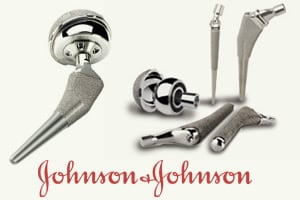
In a just-announced accord, health care giant, Johnson & Johnson, has agreed to pay more than $4 billion to resolve thousands of lawsuits brought over its recalled ASR hip devices. Three people familiar with the deal told Bloomberg.com that the settlement is the largest in the United States involving legal claims brought over a medical […]
 In a just-announced accord, health care giant, Johnson & Johnson, has agreed to pay more than $4 billion to resolve thousands of lawsuits brought over its recalled ASR hip devices.
In a just-announced accord, health care giant, Johnson & Johnson, has agreed to pay more than $4 billion to resolve thousands of lawsuits brought over its recalled ASR hip devices.
Three people familiar with the deal told Bloomberg.com that the settlement is the largest in the United States involving legal claims brought over a medical device. The accord settles more than 7,500 lawsuits in both federal and state courts brought against J&J’s DePuy Orthopaedics unit, those familiar with the deal said. The three requested anonymity as they were not authorized to speak publicly on the matter.
On average, the device maker will pay at least $300,000 for each of the surgeries involving the devices, the people told Bloomberg.com. The agreement also does not prevent patients from seeking future compensation if their hips fail, which means the massive settlement is not capped in terms of its total value. The settlement is scheduled to be announced next week in federal court in Toledo, Ohio.
The agreement “resolves a lot of litigation that could have dragged on for years and cost J&J much more money in the long run,” Carl Tobias, who teaches product liability law at the University of Richmond in Virginia, told Bloomberg.com.
This is J&J’s second multi-billon-dollar agreement in a month. The world’s largest health care products maker agreed earlier this month to pay $2.2 billion to resolve criminal and civil investigations into the way in which it marked drugs, including Risperdal, an antipsychotic.
Under the DePuy accord, 94 percent of the eligible claimants must either sign up for the settlement or the firm can withdraw, the people stated, according to Bloomberg.com
“It’s certainly a lot of money, but there are whole bunch of people who contend these hips caused grievous injuries,” Tobias told Bloomberg.com. “So some of them may feel like this isn’t enough compensation for what they’ve gone through,” he added.
In 2010, the company recalled 93,000 ASR hip implants in a global recall. At the time, the firm said that 12 percent of the devices failed within five years; however, internal J&J documents revealed that, in fact, 37 percent of ASR hips failed after 4.6 years. The 2012 failure rate in Australia reached 44 percent in seven years, according to Bloomberg.com.
Introduced in 2005, DePuy’s metal-on-metal hip implant devices were advertised to last two decades and provide increased range of motion over traditional devices. Failures mounted, injury reports mounted, and litigation mounted. Patients alleged injuries that included dislocations; pain; metallosis (metal poisoning); fracture; difficulty ambulating, rising, standing, and balancing; noise emanating from the joint; and pseudotumors, to name just some.
Patients alleged debris from the chromium and cobalt hip device led to tissue death and increased blood metal ion levels, Bloomberg.com reported.
The device maker faces some 12,000 lawsuits that have been filed in federal and state courts in Ohio, California, and New Jersey, noted Bloomberg.com. U.S. District Judge David Katz, in Toledo, Ohio, is coordinating the federal litigation; the settlement requires Judge Katz’ approval.
The three speaking to Bloomberg.com pointed out that claims in the remaining cases potentially filed by patients who are concerned they may need future revision surgery would be handled in a second round of settlements. The $4 billion settlement will be structured to provide compensation to hip patients based on factors such as patient age, injuries, and revision surgery history and provides more compensation to those patients who suffered from so-called “extreme injuries” tied to device failure, as well as patients who underwent long hospitalizations following removal of the defective devices.
The device maker agreed to set funds aside for Medicare and other insurer reimbursement over claims paid on behalf of hip implant patients. That agreement could potentially add hundreds of millions of dollars to the settlement’s value, according to the people, Bloomberg.com reported.
Prior to this accord, J&J lost one trial, won a second, and had scheduled seven more over the ASR devices. The devices were constructed in two similar models—the ASR XL Acetabular System and the ASR Hip Resurfacing System.


